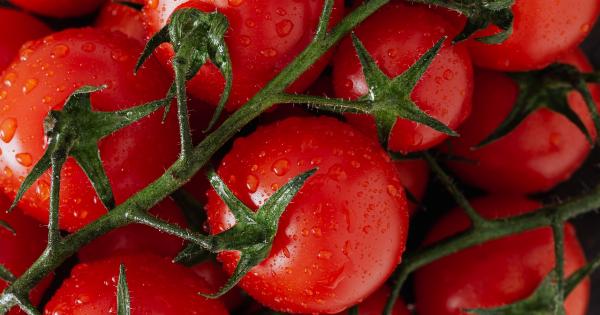When it comes to our food choices, there is always a debate about whether raw or cooked is the best way to consume certain foods.
While some argue that raw food maintains its natural nutrients and enzymes, others claim that cooking enhances flavors and makes it easier to digest. In this article, we will examine six common foods and weigh the pros and cons of eating them raw or cooked. By the end, you may have a better understanding of which method is best suited to your taste and health preferences.
1. Vegetables
Raw vegetables have long been praised for their nutrient content and crisp texture. Eating vegetables in their raw state can provide a quick dose of essential vitamins, minerals, and fiber.
On the other hand, cooking vegetables can soften their tough texture, break down cellulose walls, and release antioxidants that are bound within the cell structure.
While raw vegetables offer a crunchier experience, cooking vegetables can make certain nutrients more bioavailable. For instance, studies suggest that cooked tomatoes provide a greater amount of the antioxidant lycopene compared to raw tomatoes.
However, it’s important to note that cooking certain vegetables for too long or at high temperatures may lead to nutrient loss.
2. Meat
When it comes to meat, cooking is essential to eliminate harmful bacteria and parasites. Heat destroys bacteria like salmonella and E. coli, making cooked meat safer to consume.
Additionally, cooking meat improves its digestibility by breaking down tough proteins and connective tissues, making it easier for the body to absorb essential amino acids.
That being said, some argue that raw meat, such as carpaccio or sushi, retains more of its natural flavors. However, consuming raw or undercooked meat carries the risk of ingesting harmful pathogens.
Therefore, it’s essential to ensure that raw meat is fresh and sourced from trusted suppliers if you choose to consume it.
3. Legumes
Legumes, such as beans and lentils, are widely consumed for their high protein and fiber content. Raw legumes are often difficult to digest due to the presence of antinutrients like phytic acid.
These antinutrients can hinder the absorption of essential minerals like iron and zinc.
Cooking legumes not only improves their taste and texture but also helps break down antinutrients, making their nutrients more accessible.
Boiling or pressure cooking legumes is particularly effective in reducing antinutrients and increasing mineral bioavailability.
4. Grains
Raw grains, such as rice or oats, are challenging to digest due to their high fiber and starch content. Cooking grains not only softens them but also breaks down complex carbohydrates, making them more easily digestible.
Additionally, cooking grains can help inactivate enzymes that may hinder nutrient absorption.
Boiling or steaming grains can also increase the release of certain antioxidants, such as ferulic acid in rice bran.
However, overcooking grains may lead to nutrient loss, so it’s important to follow cooking instructions to retain their nutritional value.
5. Eggs
Eggs are a versatile ingredient and can be consumed in various ways, both raw and cooked. Raw eggs have enjoyed popularity in certain fitness communities due to their high protein content and the belief that cooking can damage their nutrients.
However, consuming raw or undercooked eggs poses a risk of salmonella infection.
Cooking eggs thoroughly not only eliminates the risk of bacterial contamination but also improves protein digestibility. Heat denatures the protein structure, making it easier for our bodies to process and absorb the amino acids.
Whether you prefer them boiled, fried, or scrambled, cooking eggs is the best way to ensure their safety and nutrient availability.
6. Fish
The debate between raw and cooked fish centers around the popular dish: sushi. While sushi enthusiasts value the delicate flavors and textures of raw fish, it’s important to consider the risk of consuming raw seafood.
Raw fish may contain parasites such as tapeworms and roundworms, which can cause digestive issues and other complications.
When fish is properly cooked, it not only eliminates these potential parasites but also enhances flavor and texture. Cooking fish denatures proteins, making them more accessible to our digestive enzymes.
Whether you choose to enjoy your fish rare or fully cooked, it’s crucial to ensure that it comes from safe and reputable sources.
In Conclusion
The debate between raw and cooked foods ultimately comes down to personal preference, cultural norms, and the specific food item.
While raw foods may offer some nutritional benefits, cooking can enhance flavors, improve digestibility, and eliminate potentially harmful bacteria and parasites. It’s important to strike a balance between the two, considering safety, taste, and the nutritional profile of each food.































